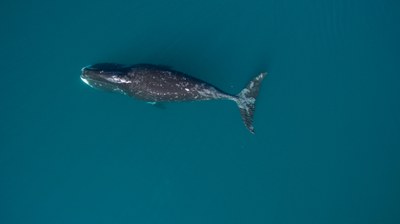Investigating factors influencing habitat selection of Arctic marine mammals to understand important future habitats under climate change
Silja Zimmermann
Climate change heavily impacts Arctic marine ecosystems and associated sea ice decline is predicted to result in some of the most drastic consequences. This study investigates factors influencing habitat selection of five ice-obligate and ice-associated Arctic marine mammals, for which sea ice forms an integral part of their habitats. A comprehensive literature review identifies major factors influencing habitat selection of the polar bear (Ursus maritimus), walrus (Odobenus rosmarus), narwhal (Monodon monoceros), beluga (Delphinapterus leucas) and bowhead whale (Balaena mysticetus). We then move forward focusing on the bowhead whale, for which specific seasonal sea ice habitat preferences are defined on the basis of Ferguson et al. (2010). We explore the development of the expression of three different sea ice variables (sea ice concentration, ice thickness and floe size) from 2006 to 2020 by means of a time series analysis and use the obtained information as a basis for predicting habitat under climate change. We perform future simulations, based on CMIP5 modelling results for RCP4.5 and RCP8.5 emission scenarios (2040-2050, 2090-2100). Rising temperatures and reduced sea ice thicknesses are forecast to lead onto the deterioration of suitable bowhead whale summer and winter sea ice habitat under both emission scenarios. Yet, sea ice habitat refuges are expected to remain in Eastern Canada and West Greenland, which underpins the importance of the so-called Last Ice Area. For both representative concentration pathway scenarios and projected sea surface temperatures and ice thicknesses, forecast habitat loss tends to be more distinct for summer habitats than for winter habitats. Habitat loss begins to occur mainly in coastal areas and estuaries, but spreads to deeper ocean areas as temperatures continue to rise and ice thicknesses constantly decrease by 2090 to 2100. We conclude with the recommendation for policy- and decisionmakers to ensure the protection of these areas by enforcing marine protected area networks (MPAN) in order to sustain important spatial links between remnant habitat patches for Arctic marine mammals in the future.

